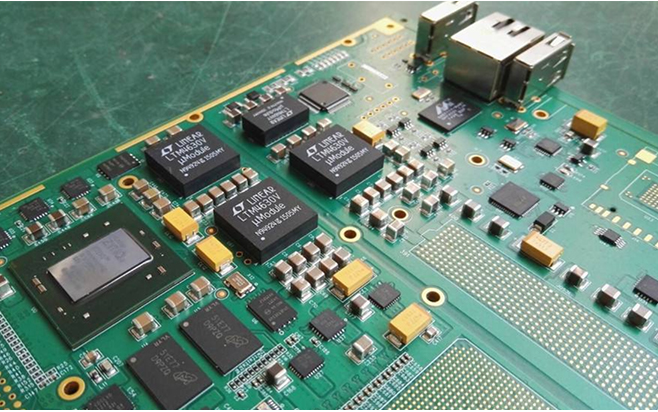The welding requirements of PCB components for circuit board welding: The soldering pad and the soldering end of the soldered device must be heated at the same time, and the soldering pad and the soldering device must be heated at the same time in a large area. Pay attention to the angle of the soldering iron tip and solder input and removal.
Thin devices should be soldered on the pads. Thin devices cannot be heated, so the soldering iron should not be in direct contact and should be heated on the pad to avoid damage and cracks.
1. Welding of resistors
Accurately install the resistors in the specified position according to the component list, and require the mark to be upward, and the word direction to be consistent as much as possible. After installing one specification, install another specification, and try to make the height of the resistor consistent. After soldering, cut off all the excess pins exposed on the PCB board surface .

2. Welding of capacitors
Install the capacitor into the specified position according to the component list, and pay attention to the polarity of the capacitor, the "+ and" poles can not be connected wrongly. The direction of the marking on the capacitor should be easy to see. Install glass glaze capacitors, metal film capacitors, and ceramic capacitors first, and finally install electrolytic capacitors.
3. Welding of diodes
After correctly identifying the positive and negative poles, install it in the specified position as required, and the model and mark should be easy to see. When welding a vertical diode, do not exceed 2 seconds when welding the shortest pin.
4. Welding of triode
Install the three pins e, b, and c into the specified positions as required. The soldering time should be as short as possible. Use tweezers to clamp the pins during soldering to help dissipate heat. When welding high-power transistors, if you need to install a heat sink, the contact surface should be flat and smooth before tightening.
5. Welding of integrated circuits
Insert the integrated circuit on the circuit board, and check whether the type and pin position of the integrated circuit meet the requirements according to the requirements of the component list. When soldering, solder the two pins on the edge of the integrated circuit first to position them, and then solder one by one from left to right or from top to bottom. When soldering, the amount of tin that the soldering iron can pick up at a time is the amount of soldering 2~3 pins. The soldering iron tip first touches the copper foil of the printed circuit. When the soldering tin enters the bottom of the integrated circuit pin, the soldering iron tip touches the pin again. The contact time It is advisable not to exceed 3 seconds, and the solder should evenly cover the pins. After soldering, check to see if there is any missing soldering, butt soldering, or false soldering, and clean the solder at the solder joints.
IC devices have continuous terminals, and the soldering iron tip can pull the solder when soldering.
Because the solder pitch of IC integrated blocks is too small, it is necessary to use the method of pulling the solder for soldering.
Phase 1: When the IC soldering starts, the diagonal soldering should be used to position the IC without solder. The positioning point cannot be soldered (otherwise it will be offset)
Phase 2: Pull the solder
The tip of the soldering iron is tip-shaped (add a small amount of rosin if necessary)
Note: PCB factory should pay attention to the collision parts around, in order to prevent high temperature damage to the device, you can place alcohol-dipped cotton on the IC integrated block during soldering. The volatilization of alcohol can reduce the temperature on the integrated block and effectively protect the device. .